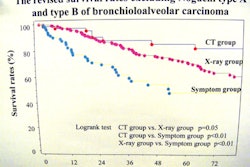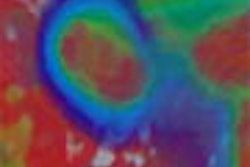Even in patients with high heart rates, dual-source coronary CT angiography (CTA) provides accurate detection of significant lesions, according to a preliminary study by Dutch investigators. One reason for dual-source CTA's success is technical advancements in the equipment, said the group from Erasmus Medical Center in Rotterdam, Netherlands.
The investigators, led by Dr. Annik Weustink, evaluated dual-source CTA (Somatom Definition, Siemens Medical Solutions, Erlangen, Germany) in 100 consecutive patients who were scheduled for conventional coronary angiography due to either atypical or typical angina or unstable coronary artery disease. The study, presented at the 2007 American College of Cardiology (ACC) meeting in New Orleans, only involved patients with normal sinus rhythm; the average heart rate was 68 beats per minute. No patients were using prescan beta-blockers at the time of the dual-source CT.
The CTA system had a temporal resolution of 83 msec, an improvement over earlier iterations of the equipment, according to Weustink. The average scan time was 8.6 seconds, and the pitch varied between 0.20 and 0.53. Dual-source CTA results were read by two observers who were blinded to conventional angiographic results. A significant coronary stenosis was defined as a reduction in the lumen diameter of at least 50%.
According to the results, dual-source CTA's sensitivity and specificity for detecting significant stenoses in a segment-by-segment analysis was 95%. The positive predictive value was 75% and the negative predictive value was 99%.
In comparison, conventional angiography showed no significant disease in 16% of the patients, no significant stenosis in 7%, single-vessel disease in 31%, and multivessel disease in 46%, Weustink said.
"Our preliminary results show that this diagnostic modality has high accuracy for detecting significant lesions," Weustink said. "Among patients referred for conventional coronary angiography, the accuracy was high even when patients had high heart rates." A larger study is needed to validate there results, she added.
By Paula Moyer
AuntMinnie.com contributing writer
May 24, 2007
Related Reading
Dual-source coronary CTA images the calcium-burdened, April 13, 2007
ACC study: Dual-source cardiac CT delivers acceptable radiation dose, March 28, 2007
Copyright © 2007 AuntMinnie.com




















